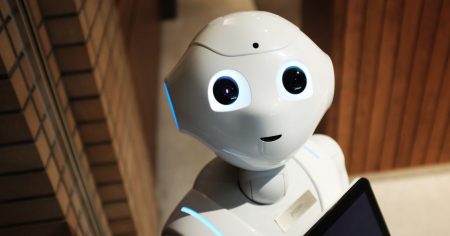
On miners and bots – the future of the Medical Affairs Department
It’s 2025 and I would like you to join me in welcoming the new colleagues to the Medical Affairs Department:
A data scientist, an AI bot and a digital capabilities specialist. Who are they and how could they enhance the work a Medical Affairs team does? Let’s take a look back where things started, where we are now and where we are headed.
From the initial compound screen through to regulatory approval, reimbursement and commercial supply, drug development involves scientists in operational and medical functions to run the studies and operations. The Medical Affairs team uses the data generated by Research and Development to communicate and get insights from HCPs, payors and often, although indirectly, patients. The insights they are receiving contributes to the mission to bring a new drug to patients, improve an existing therapy or expand an indication. Along this long journey, the Medical Affairs team often provides education internally and externally, ensures scientific accuracy of promotional activities and facilitates opportunities to collaborate with academic centres and key HCPs to identify further data gaps or get insights on the therapeutic landscape.
Nowadays the Medical Affairs function has evolved from the “MSL trademark” established in 1980 that was described as an educational service to initiate studies and develop workshops around drug related medical topics to now being a strategic partner connecting internal and external stakeholders.
Over 40 years have gone by from the first trademark to today and the Medical Affairs role has changed and expanded into a multi-facetted role. At the same time, the speed of data generation and the way of communication has also changed. The digital revolution has led to digital record keeping and digital communication. The first mobile phone came out as a brick in the 70s, computers/laptops with internet have become an everyday item, social networking which started in the early 2000s is now part of everyday communication and smart phone are now part of everyday life. At the same time data generation by scientific research was accelerated at speed. The PCR (polymerase chain reaction) for example was invented in 1985 and formed the basis for assays like deep sequencing, generating huge amounts of big data that can no longer be analysed by one person. In the wake of this are in-coming: your new colleagues the digital capabilities specialist, the AI bot and the data scientist.
We all experienced how the global pandemic fast forwarded digital engagement initiatives and might forever change the way Medical Affairs communicates. Digital capability experts quickly became a new set of stakeholders that needed to be engaged to organise webinars, virtual advisory boards or work on an application that helps to ensure the Quality Use of Medicines (QUM).
Artificial intelligence (AI) is the science of machine learning algorithms, artificial neural networks that have the capability to learn to abstract outputs based on their inputs. An example is IBM Watson, a cloud-based machine learning service that can be trained to deploy AI powered applications. Another impressive example is the use of AI to analyse biopsy images and it has already been shown to outperform the specialists in recognising abnormal cell growth.
The data scientist role has developed due to the large amounts of data generated by scientific research or by companies collecting insights from their respective fields. These specialised scientists mine, collect and analyse large amounts of data from databases, RWD (Real-World Data) evidence or disease registries.
These new Medical Affairs functions will work in close collaboration with the traditional Medical Affairs colleagues. Companies who start engaging data scientists and AI to obtain and analyse data will be able to move faster by gaining insights from large amounts of medical and scientific data sources to drive research and development and increase commercial value. An experienced Medical Affairs team who employs a data scientist could add value to medical innovation and research by linking this information to clinical outcomes. They could work in close collaboration with medical specialists to identify needs for digital capabilities such as remote patient monitoring for drug adherence and to detect potential side effects much earlier. Insights could be gained from internal databases or Real-World data sources to identify open questions, to feed into medical strategy, identify educational needs or open research questions to further drug development. Real- World data mining, performed by data scientists can support discussions around health technology assessments (HTA) with payors, to the extent that AI could identify complex biological patterns in large datasets from clinical trials to identify responders and non-responders to a therapy.
While some of this might sound very abstract and far away, if I had a data scientist at hand, I would have asked them to research and analyse the history of the Medical Affairs function and then used an AI bot to come up with an algorithm to determine future solutions. It would provide all the relevant info within minutes and helped write this blog. In all seriousness it’s probably time to start familiarising ourselves with these new functions and embracing their capabilities and the opportunities they provide to a Medical Affairs function.
